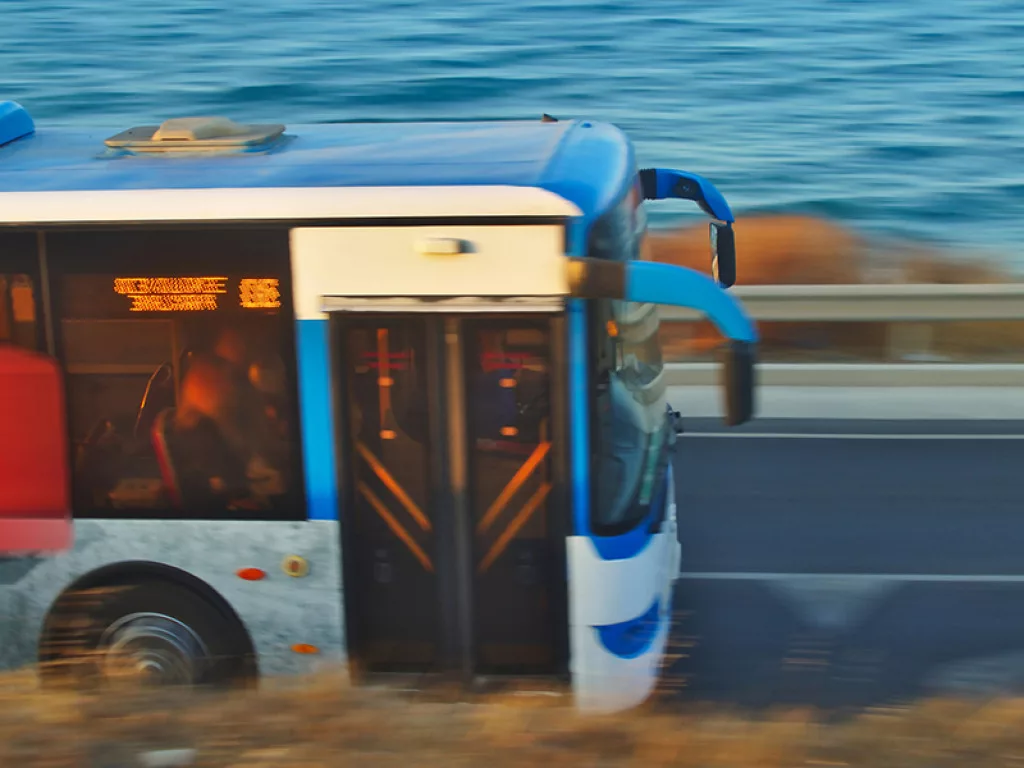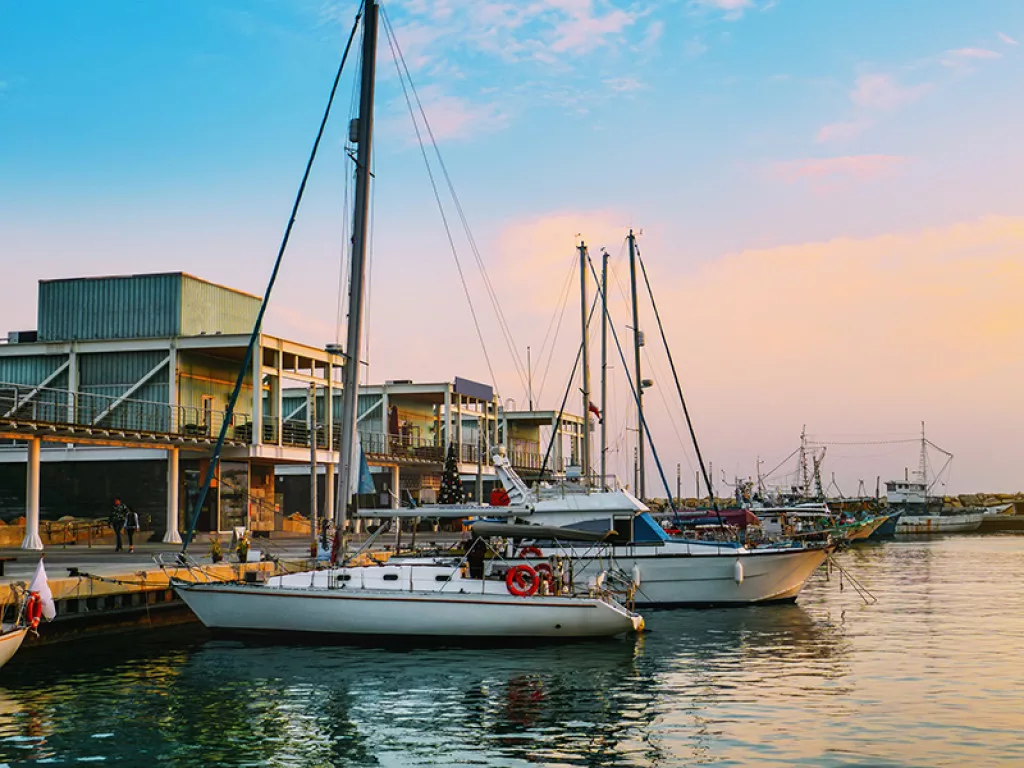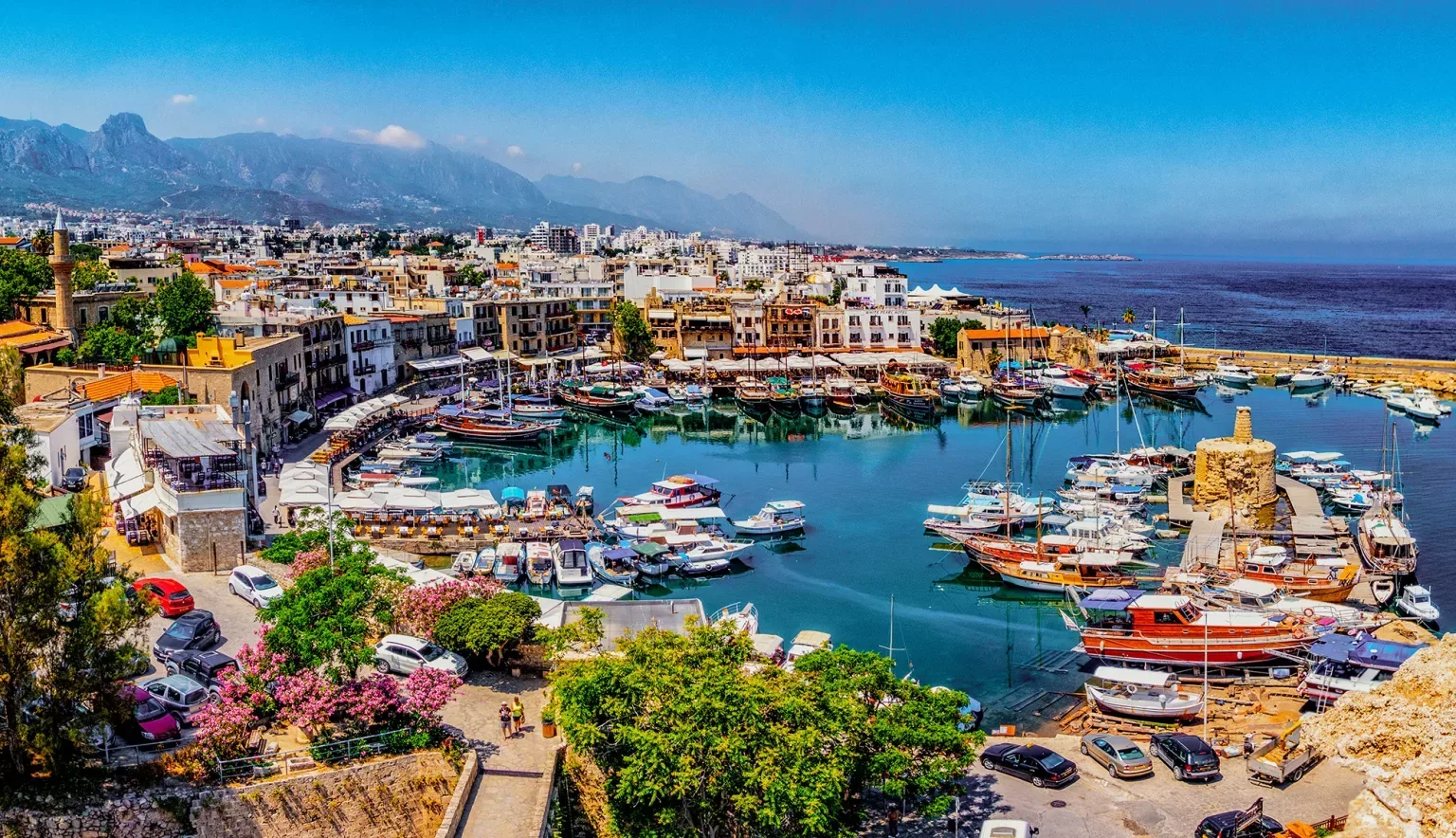Like Aphrodite rising from the sea, the sun-soaked Mediterranean island of Cyprus is set for a rebirth in tourism in the wake of COVID-19. We peel back the layers on this travel hotspot for 2022.
CYPRUS
Described by the Greek Cypriot poet Leonidas Malenis as ‘a golden-green leaf thrown into the sea’, the idyllic island of Cyprus is the iconic haven of the Eastern Mediterranean.
A land of volcanoes, fertile mountain valleys and Europe’s largest number of blue-flag beaches, the Republic of Cyprus was recently celebrated by Lonely Planet as a Top 10 Country for Best in Travel for 2022.
An historic crossroads between Europe and Asia, influences of Greek, Turkish and Middle Eastern culture abound. The island’s history is diverse, to this day separated by the ongoing partition between the independent Turkish state of Northern Cyprus and the Greek Cypriots of the south, after the island’s two ethnic majorities were officially separated following the Turkish invasion of 1974.
Dating back centuries, the legacies of multiple cultures are still tangible as evidence of Cyprus’ rich history. The landscapes are littered with Greco-Roman ruins, the remnants of great kingdoms, Bronze Age tombs and Neolithic dwellings. Boasting Byzantine Churches and the ancient walled Old Town in the heart of Nicosia, Cyprus’ architectural legacy is varied and awe-inspiring. Archaeological enthusiasts will find themselves spoilt by the sights of Paphos and the resplendent ruins of Kourion.
Cyprus’ beaches need no introduction, with swathes of white sand for every kind of traveller offering cooling turquoise waters that draw in nesting turtles every year. Escape from the over-developed resort towns of Ayia Napa, Lemesos and Larnaca, to lesser-visited parts of the island. Outdoor enthusiasts will luxuriate in the scenic Troödos Mountains, home to quiet stone-walled villages carved into the mountainside and a plethora of hiking trails. The traditional Greek Orthodox culture in Cyprus’ interior offers a slower pace of life, making for the perfect place to watch the world go by from an authentic taverna. Here, traditional family life mingles with food culture and folk customs.
Savour the taste of mezze, locally-made hummus, sumptuously sticky baklava and some of the finest wines in Europe, hand-picked from the flourishing vineyards that cover the mountain slopes of the island’s pine-clad mountainous spine.
A land steeped in myth, legend has it that Cyprus is the birthplace of the ancient Greek Goddess Aphrodite. The influence of the Goddess of Love still lingers in this most popular of honeymoon destinations. Wherever you set your sights, traditional Cypriot hospitality is guaranteed to offer a warm welcome.
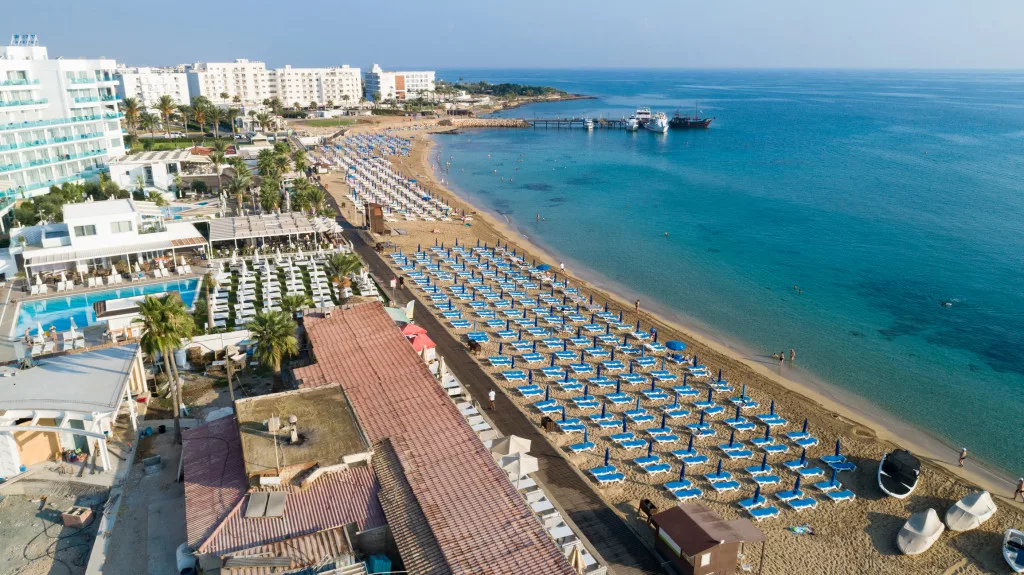
TOURISM INSIGHTS: CYPRUS HOTEL ASSOCIATION (CHA)
The official home of hospitality on the island, the Cyprus Hotel Association (CHA) has long been established as the largest tourism organisation association in Cyprus. For over 85 years, CHA has consolidated the major tourist industry players across Cyprus within its membership, including the majority of all hotel establishments and other licensed tourist accommodation units.
A member of HOTREC (Association of Hotels, Restaurants, Bars and Cafes in Europe), an affiliate member of the United Nations World Tourism Organisation (UNWTO) and the Cyprus Chamber of Commerce & Industry (CCCI) amongst several other notable official bodies, CHA continues to champion the best interests of the island’s tourism sector.
Now, in the wake of the COVID-19 pandemic and confronting new global challenges, we take a look at the association today with Director General, Mr. Philokypros Roussounides.
Q&A WITH PHILOKYPROS ROUSSOUNIDES, DIRECTOR GENERAL, CHA
Can you talk us through the origins of the CHA and its initial vision?
Philokypros Roussounides, Director General (PR): The CHA was established back in the 1930s. We are the main body for hoteliers and hotel owners. CHA represents the hotel industry in several government bodies, and the tourism industry of Cyprus in general.
What are your organisation’s current goals?
(PR): The first is establishing a model of solid and sustainable tourism, whilst acting as a representative for the vested interests of the hoteliers. We want to align our national tourism strategy and assist in the overall efforts of the tourism industry. To do this, we will be working very closely with other industry players to bring our tourism map to the next level, since we are heavily involved in the decision-making and legislation behind Cyprus’ tourism sector. Together, we will continue to face the challenges that we have encountered in the past few years.
How do you market Cyprus as both a business and leisure travel destination?
(PR): We envision Cyprus as an easy getaway, both for business and leisure travellers. It is also an attractive value-for-money destination, offering many different kinds of tourism products. This ranges from business tourism to other specialised forms of tourism, including oenology, gastronomy, medicinal tourism, religious tourism, or sports tourism. Above all, we boast the biggest proportion of blue flag beaches in Europe.
What trends are currently transforming tourism in Cyprus and how are you utilising them?
(PR): Over the last few years as a result of COVID-19, we have seen more individuals travelling, rather than through tour operators or travel agents. In this respect, these specialised forms of tourism have helped.
Travellers are more into slow tourism now, where they actually blend with local society and really experience the culture. As an example of this, we established our ‘Heartland of Legends’ route which offers a map where you can encounter many different micro-experiences across the island. This might be anything from visiting a small winery to making our famous halloumi.
What is special about Cyprus is the variety of experiences that you can have within just a single trip, due to the small scale of the island. You might be enjoying a blue flag beach in the morning, having lunch up in the mountains, and then enjoying dinner in a winery all on the same day.
What sustainable travel experiences does Cyprus have to offer?
(PR): Sustainable tourism is a key pillar of our tourism strategy and products. We are getting more and more green in terms of the facilities and the products that we offer and are looking to promote any tourism products that are centred on sustainability.
Does the association have any exciting events coming up?
(PR): Every year we have our Hotel Conference, which this year will be held in mid-November. The event gathers some of the main stakeholders in tourism from all around the world. This includes Ministers and Presidents of world-class associations for hoteliers. It is also both a Conference and an Exhibition of Products and Services, so suppliers can exhibit their products during conference breaks. It’s an exciting event that has taken place for over 45 years.
Are you optimistic about the future of the tourism industry in Cyprus, particularly with regards to the COVID-19 pandemic?
(PR): Initially, we anticipated that the recovery from the COVID-19 pandemic for the industry was likely to be achieved within year one – meaning 2022. Due to the messaging from our main stakeholders, tour operators, and the number of individuals travelling as well, we were very optimistic about it. But now, as a result of the war in Ukraine, bookings have slowed again. For the forthcoming summer period, HERMES – the operating company of our airports – has announced more than 10 million seats on 140 routes, from 95 destinations in 38 countries.
At the moment, we are working with the expectations of a worst-case scenario, meaning that we expect zero tourist traffic from Russia and Ukraine. Both of these countries actually accumulated between 20-22 percent of the whole tourism traffic inflow for Cyprus. So, we are devising a plan that will mean we are less reliant on that stream. We are very reserved, but still optimistic that other markets, such as the UK and Israel, and newer ones like Germany, France, Poland and Sweden to name a few, have also been bringing in small numbers. We have good air connections with many of these destinations, meaning more than 25 flights a week, and we’re digitally promoting and investing in these countries.
We are working on an incentive scheme that will fill up these flights and increase the number of people travelling from such countries in a way to minimise the loss we will experience from the Russian market.
Our main target for this year is to have more people coming to Cyprus than last year. In 2021 we reached 50 percent of 2019 levels, which was the last ‘normal’ tourist year before the pandemic. We aim to bring this number back to 60-65 percent of 2019 records, which will mean the first year of the partial recovery of the industry.
www.cyprushotelassociation.org
OUTLOOK RECOMMENDS
EAT:
For a Traditional Taverna
Piatsa Gourounaki – Translating as the ‘Piazza of the Little Pig’, this local hotspot boasts the best of Greek cuisine. Expect wooden tables piled high with seared halloumi, herb-stuffed meats and other mouth-watering delicacies.
For Budding Oenophiles
Kolios Winery – One of the island’s finest, this scenic winery is situated on a mountain peak, a kilometre from the village of Statos Ayios Photios. Stop here to enjoy a taste of the finest hand-picked produce from the nearby Kolios vineyards, where wine has been cultivated for over four generations.
DO:
Dedicate time to Detox
Derived from the Greek word ‘thalassa’, meaning sea, Cyprus hosts some of the best thalassotherapy centres in the Mediterranean. Savour the restorative effects of seawater in baths, jet showers or sauna rooms in luxuriant spa surroundings. The Anassa is widely regarded as one of the best.
Take a Hike
As the largest mountain range in Cyprus, the Troödos Mountains boast a range of treks, suitable for both novice amblers and ambitious hikers. The Caledonia Trail is particularly popular, beginning in Platres and following the Kryos Potamas en route to the breathtaking Caledonia waterfall.
SLEEP:
For an Exclusive Oasis by the Sea
The Tsokkos Hotels & Resorts group has an established history as the largest hotel chain in Cyprus. With over 28 hotels and hotel apartments, Tsokkos is a leader in the Cypriot hospitality space. Its footprint extends across Ayia Napa, Protaras and Paphos. The Chrysomare Beach Hotel & Resort in particular is a luxury offering in a prime beachfront location on the iconic Nissi Avenue.
NICOSIA IN FOCUS
Cyprus’ capital and largest city, Nicosia, resembles a rich tapestry of history, a mosaic of centuries and eras torn apart by political and ethnic division after a history of empires and kingdoms laying claim to this place. Here, European, Middle Eastern, Greek and Turkish cultures collide.
Known as Lefkosa in Turkish, the city is essentially two capitals in one. To this day, Nicosia remains split by the infamous ‘Green Line’, which carves the boundary of the world’s largest – and last – divided capital city, separating the Greek Cypriots in the southern part from the Turkish Cypriots in the North. It is even possible to walk through the no man’s land between Nicosia/Lefkosa, known as the UN Buffer Zone.
From the relatively modern addition of sandbags, checkpoints and barriers of the Green Line to the monumental Venetian walls that encase the scenic Old Town, Nicosia’s complicated past is tangible. But in spite of this fraught geopolitical context, the capital of the Republic of Cyprus is worthy of any visitor’s attention and was recently hailed by Lonely Planet as one of the Top 10 Cities to travel to in 2022.
Originally built by Venetian rulers to discourage Ottoman invaders, the ancient walled city is now the cultural heartbeat of the island, hosting bustling restaurants and a lively bar scene. Separating the ancient city from the modern, follow narrow, serpentine streets from the notable Cyprus Museum and its significant collection of Neolitihic and Roman artefacts, to the thick, ancient stone of the city walls and the Famagusta, Kyrenia and Paphos gates. Another must-see is the elaborate Buyuk Han – a Turkish caravansarai built after the Ottoman seizure of Cyprus in 1572.
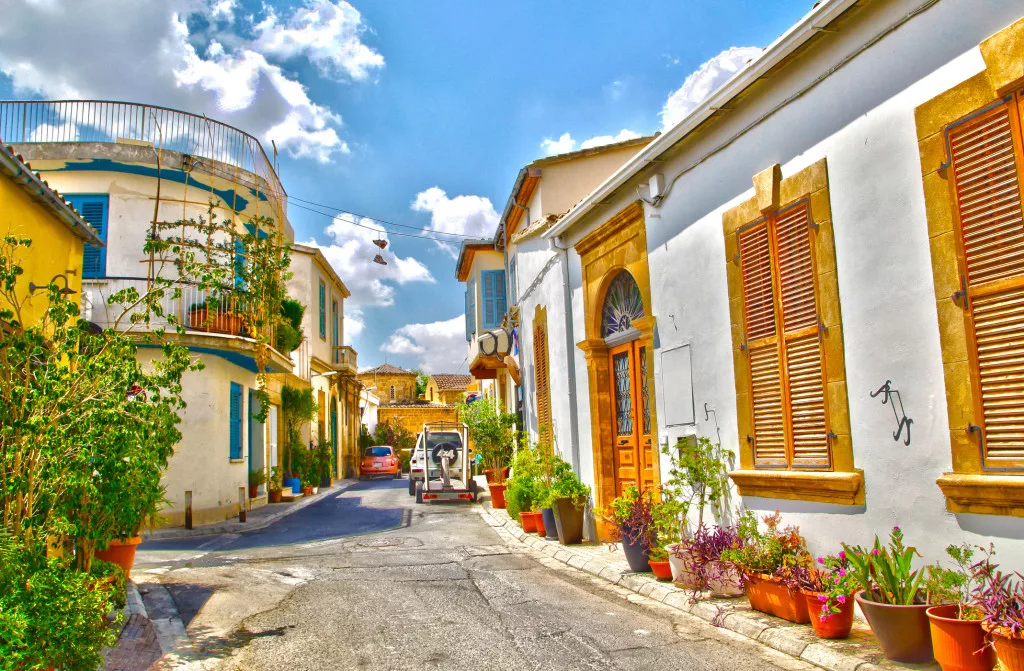
DIVING INTO CYPRUS WITH PADI
Cyprus is a diver’s paradise and PADI, the world’s leading diver organisation, has 45 Dive Centres located around the Island, offering everything from simple sandy-bottom dives for beginners to epic deep dives. Diving in Cyprus offers something for everyone, and beneath the waters a wealth of hidden treasures are waiting to be found, from shipwrecks to subtropical wildlife, colourful reef scape, excellent marine parks and diverse ecosystems.
Cyprus Diving Highlights
The Museum of Underwater Sculptures (MUSAN) in Ayia Napa
This breathtaking underwater museum, located 200 metres from the Ayia Napa coast, was created by British sculptor, Jason deCaires. The underwater forest which opened in 2021 is the first of its kind in the world. Divers and snorkellers will find 93 works of art inspired by nature and man depicting a forest full of trees, children at play and other characters. MUSAN strives to create a habitat for life in the ocean while examining the impact of man on the natural world.
Each of the sculptures is made from pH neutral materials so there’s no negative impact on the surrounding environment. The structures will act as a new home for marine life as they become covered in biomass over time – which means this is one museum that will only get better with time and age.
The Zenobia Wreck
Located near Larnaca, the Zenobia Wreck is one of the top ten wreck dives in the world, as voted by divers each year. She sank on 7th June 1980, and rests on her port side between 19m and 42m. MS Zenobia was a Swedish built Challenger-class RO-RO ferry 172m long and sank with over 100 vehicles and lorries onboard. The outside of the wreck has much to see with the two massive props, roro doors, the lorries on the outside, funnels, bridge, cafeteria, the bow area and the accommodation.
The Zenobia wreck and the area surrounding it are now an official marine reserve and therefore fully protected. It has become a haven for a range of fantastic marine life including turtles, barracuda, large grouper, tuna, jacks, moray eels, large shoals of breams, trumpetfish, triggerfish, nudibranchs, lionfish, a variety of wrasses and so much more. The sheer scale of the wreck means that there are so many different dives to enjoy, and you can explore all areas of this amazing dive site.
If you haven’t yet discovered the underwater world but you’re thinking about becoming a diver, as summer approaches it’s the perfect time to dive in and learn to scuba. The weather is generally better, the waters warmer and the seas calmer. These conditions are ideal to get scuba certified. The first step is to book your PADI Open Water Diver Course with a verified PADI Dive Centre. In doing so, you can be assured you’re receiving top training from qualified dive professionals. They will guide you as you begin this exciting journey underwater.
For more information about diving in Cyprus see:
Southern Cyprus
https://www.padi.com/diving-in/cyprus
Northern Cyprus
https://www.padi.com/diving-in/kyrenia
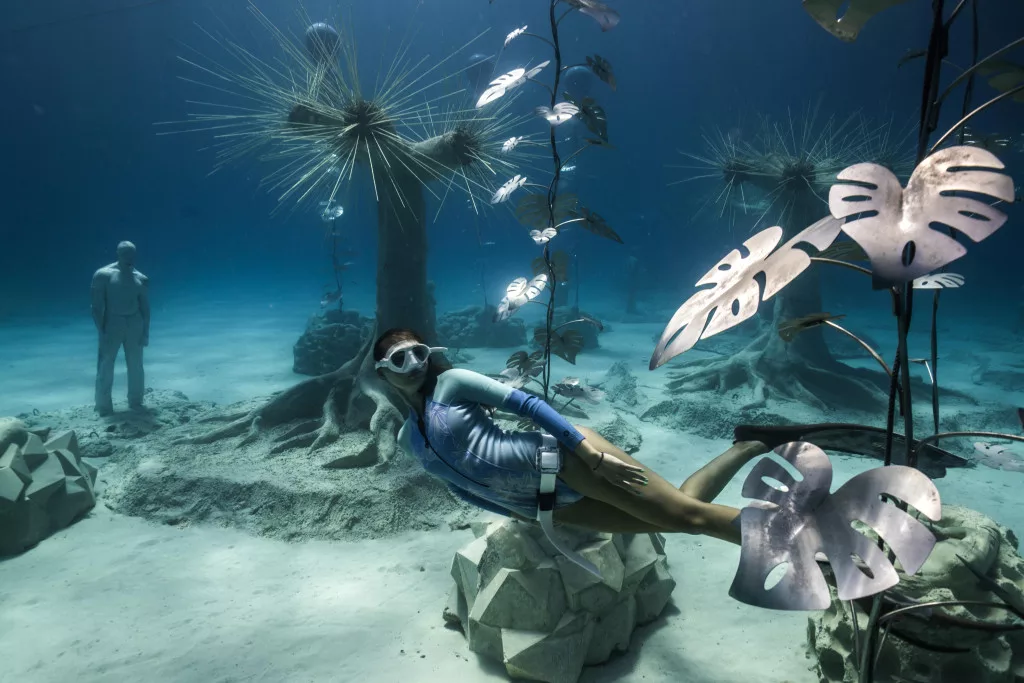
LANDMARK ATTRACTIONS
The Turtle Beaches of Cyprus
Lara Beach is something of a paradise, since its golden-sand horseshoe-shaped beach has been a protected haven since 1971. This is one of the best places in Cyprus to see turtles, as females come ashore in May to lay their eggs, which typically hatch a month later. The turtle hatchery is a safe space for nesting green and logger-head turtles. It is best to visit on foot, since private vehicles are prohibited in the nearby area during nesting season.
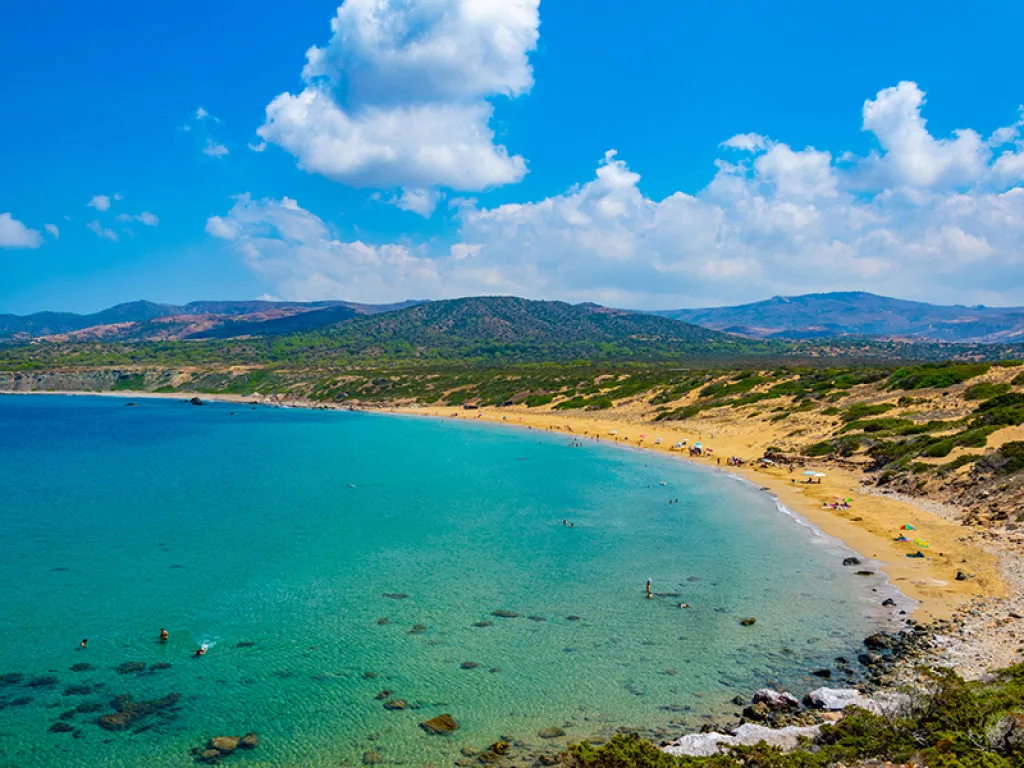
Kourion
The ruins of this ancient city near Limassol offer some of the most spectacular sea views on the island. Kourion’s dramatic cliffside location is no accident, since this city has endured a series of major invasions throughout its history, with the Greeks, Romans and Byzantines all laying claim to it. Marvel at the Roman Theatre, House of the Gladiators and archaeological open-air museum on an early morning visit, so as to enjoy the site without the crowds.
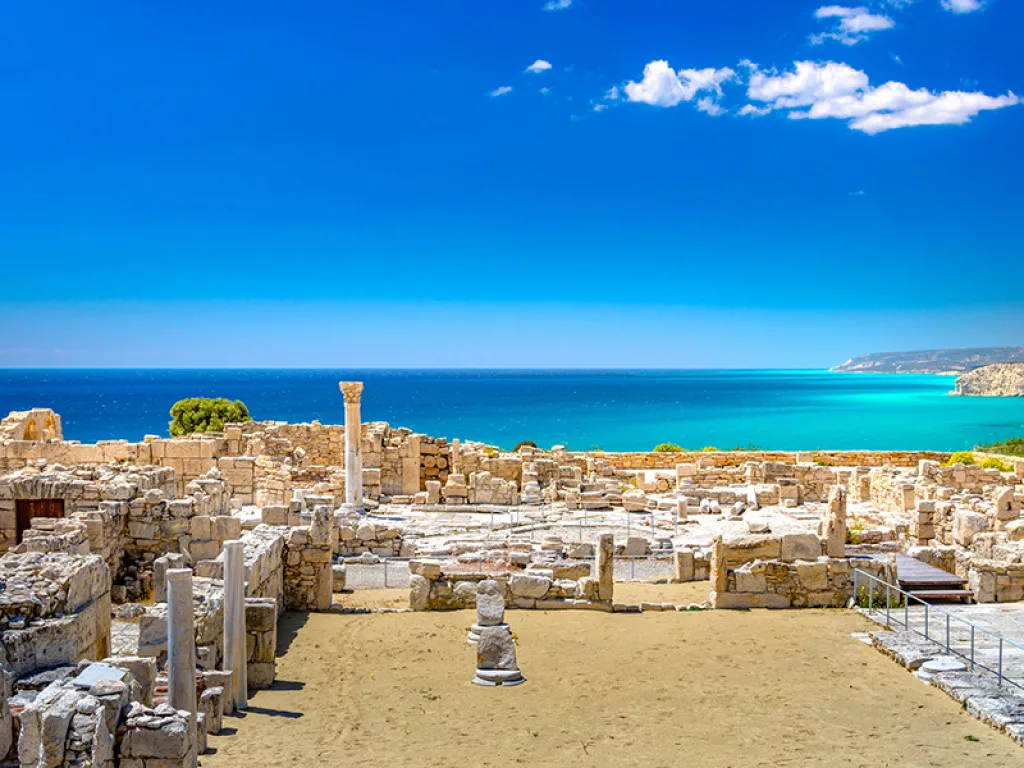
The Birthplace of Aphrodite
One of the most iconic places on the island, Aphrodite’s Beach is the legendary location where the ancient Greek Goddess of Love was supposedly born from the water. A large rock marks where she allegedly emerged, although now you will typically find it covered with swimmers diving into the crystal-clear waters. As legend goes, swim around the rock three times, and you will find your true love.
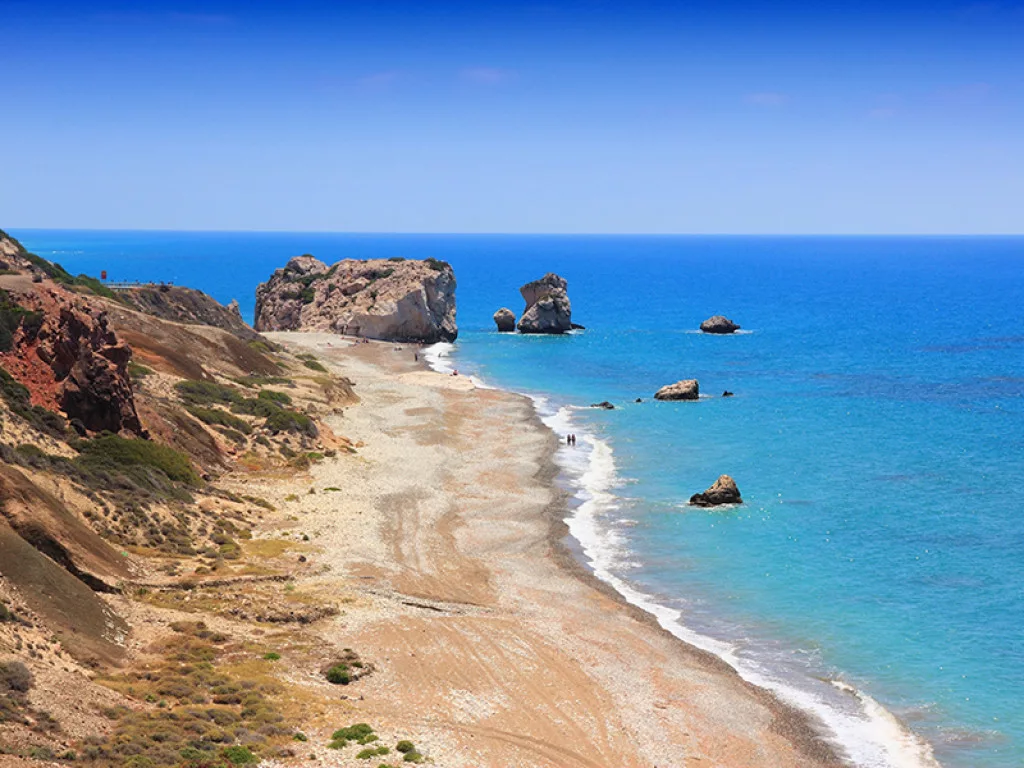
GETTING THERE AND AROUND
A relatively small island, travel around Cyprus is fairly simple and shouldn’t require long journey times. The most convenient way to traverse the isle is by hiring your own car – you can find several rental companies at the two major airports and in most popular tourist towns. Remember to book in advance, since in summer it is not uncommon for all rental vehicles to be fully booked. This is also the best option for those keen on visiting the Troödos Mountains, since no public transport is available in this area.
For those wishing to use a more eco-friendly option, the bus network is comprehensive and reliable. Bear in mind that no services run on Sundays.
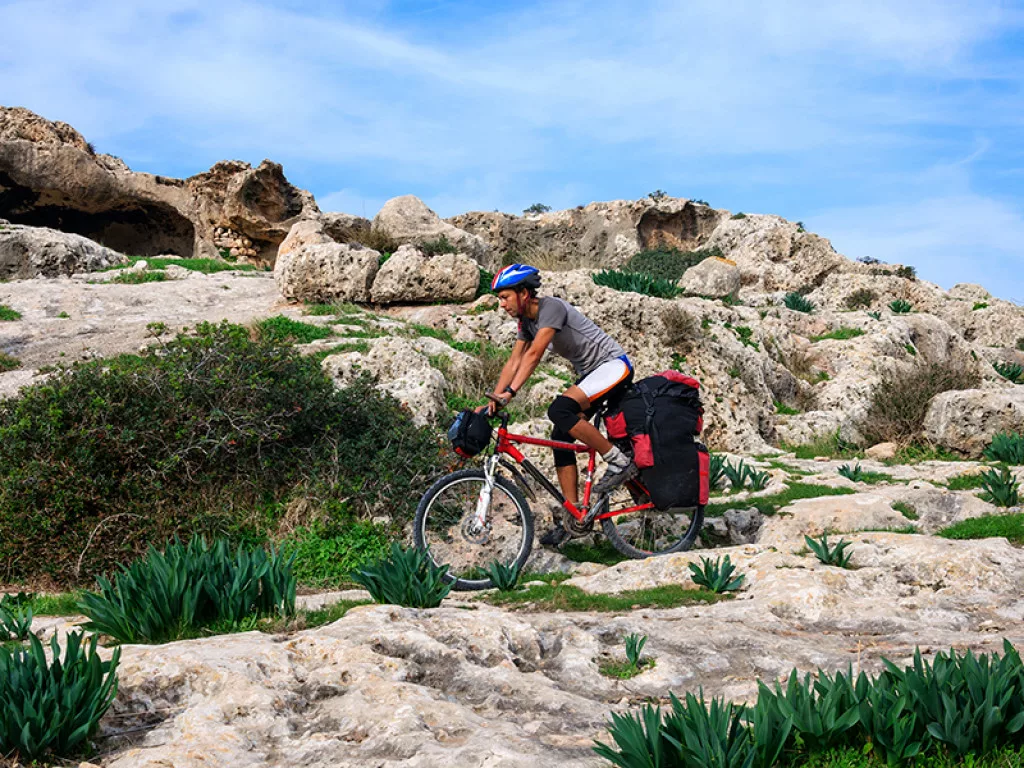
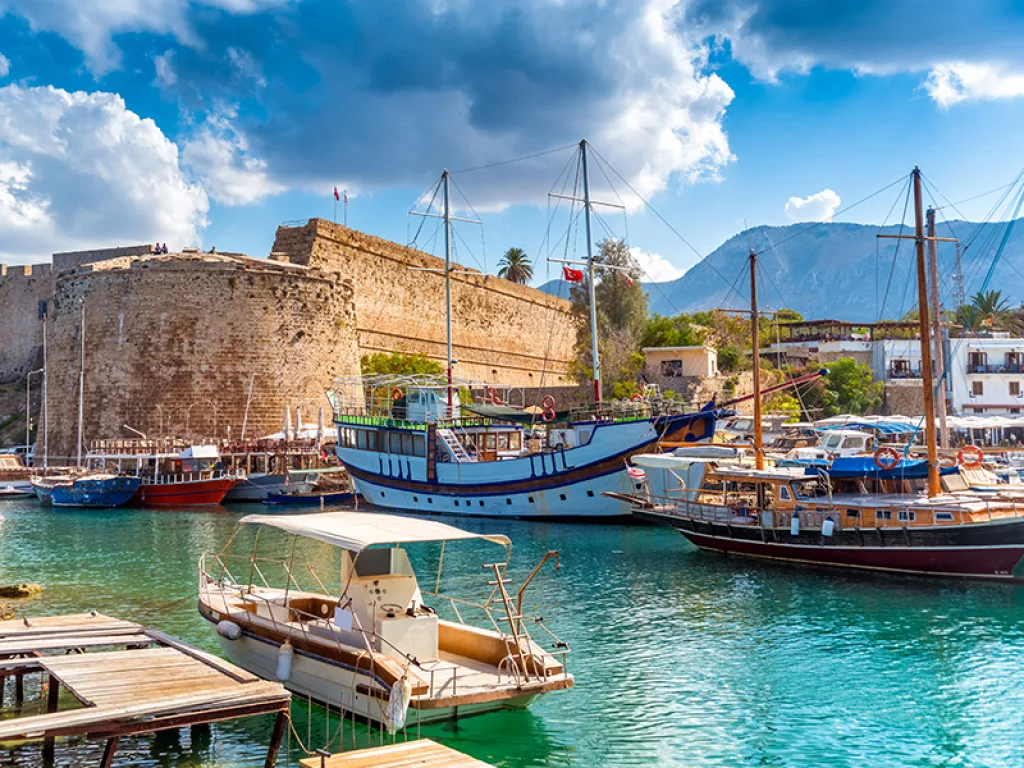
The two principal airports include Larnaca International (LCA), four kilometres from Larnaca, and Paphos International (PFO), located just six kilometres from Paphos. It is important to note the differences in travelling between the North and South of the island. The Republic of Cyprus has direct international flights into LCA and PFO, meanwhile North Cyprus is only recognised by the government of Turkey, and all flights and ferries run via the country.
If you intend to visit both sides of Nicosia/ Lefkosa, remember to keep hold of your passport since you will need it to cross to the Turkish side.
